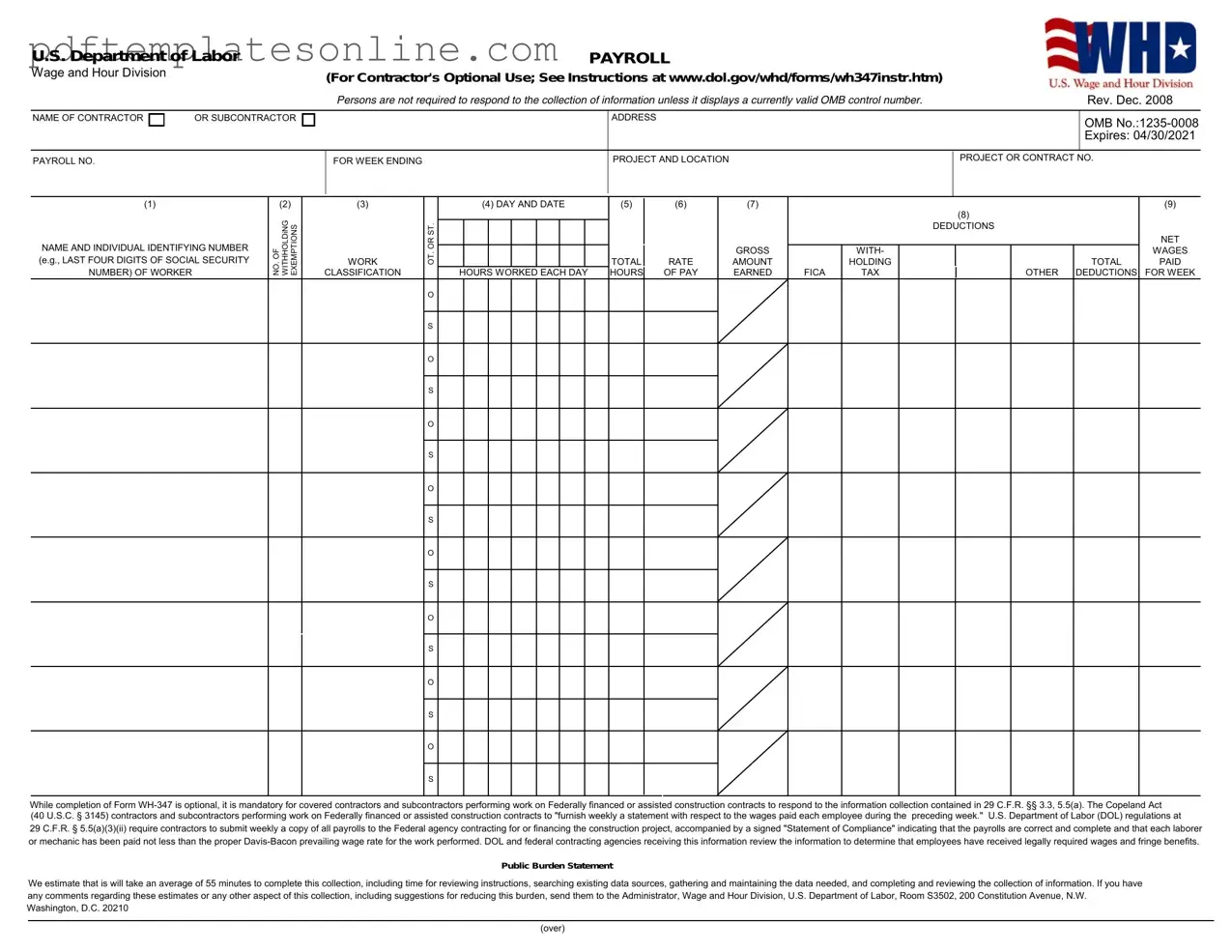Filling out the U.S. Department of Labor (DoL) form can be a straightforward process, but many individuals encounter common pitfalls that can lead to delays or complications. Understanding these mistakes can help ensure a smoother experience. One frequent error is not reading the instructions carefully. Each form comes with specific guidelines that must be followed. Skipping this step can result in incomplete or incorrect submissions.
Another common mistake is providing inaccurate personal information. This includes misspellings of names, incorrect Social Security numbers, or outdated contact information. Such errors can cause significant issues in processing the application and may require additional time to resolve.
Many applicants also fail to sign and date the form. A signature is often a critical component of the submission process. Without it, the form may be considered invalid, leading to further delays in processing.
Additionally, individuals sometimes overlook the importance of supporting documentation. Some forms require specific documents to be submitted alongside the application. Failing to include these can result in a denial or a request for additional information, prolonging the process.
Another mistake involves not double-checking the completed form before submission. Simple errors, such as leaving a section blank or misplacing decimal points, can significantly impact the outcome. Taking the time to review the form can help catch these mistakes early.
Some applicants also misinterpret the questions on the form. Misunderstanding what is being asked can lead to providing irrelevant or incorrect information. It is crucial to take the time to comprehend each question fully.
Inadequate attention to deadlines is another issue that arises. Many forms have specific submission dates. Missing these deadlines can result in the application being rejected or delayed.
Furthermore, individuals often forget to keep copies of their submitted forms. Having a record can be invaluable for tracking the application status and for future reference.
Another common oversight is not following up on the application status. After submission, it is essential to check in periodically to ensure that the form has been received and is being processed.
Lastly, some applicants fail to seek assistance when needed. If there is confusion about the form or the process, reaching out for help can prevent mistakes and ensure that the application is completed correctly.
